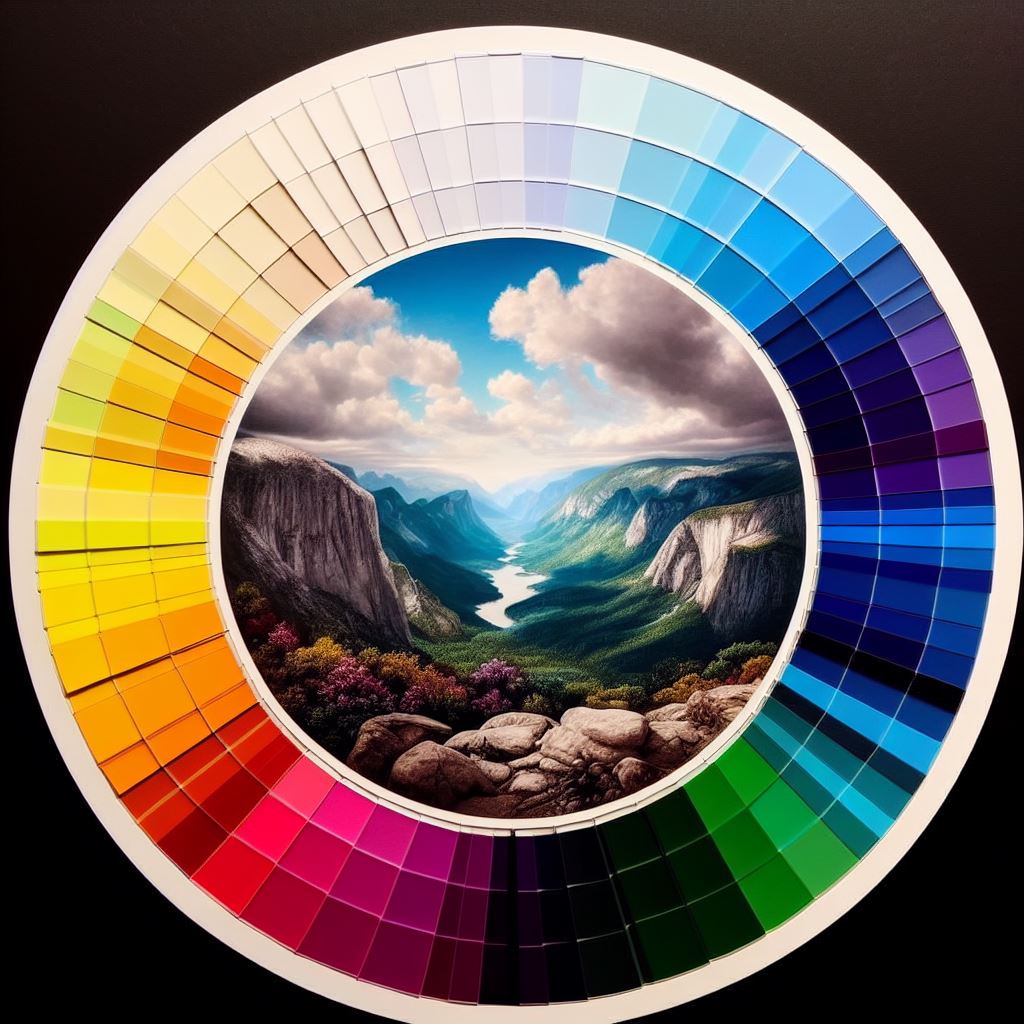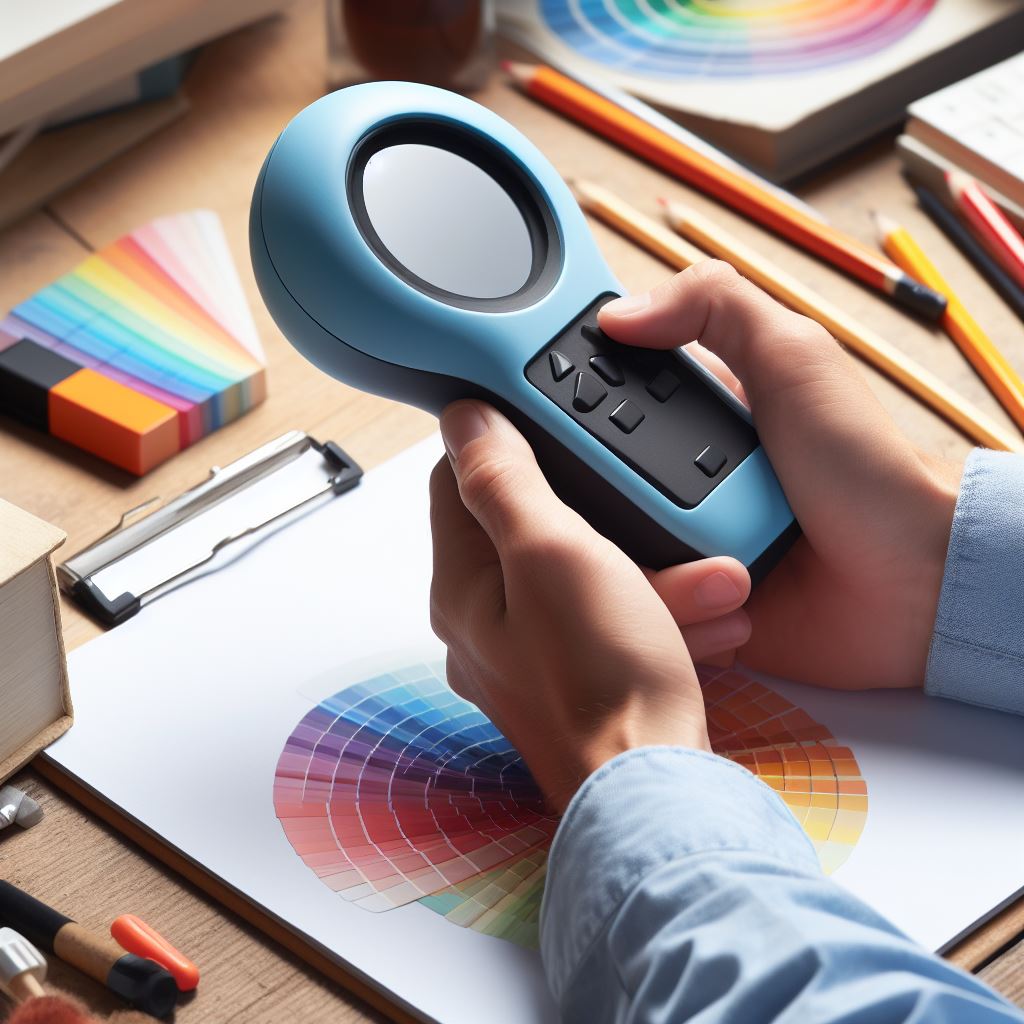
For those with normal color vision, it can be hard to imagine what it might be like to experience the world with even a slight color vision impairment. While total color blindness is rare,  , more moderate forms of color vision deficiency are actually quite common. An estimated 1 in 12 men and 1 in 200 women have some level of color blindness. One of the most frequent types is a minor degree of color vision impairment that causes occasional difficulty differentiating between similar shades of reds, greens, browns, blues, and purples. For those with this subtle form of color confusion, colors may sometimes seem muted or muddled together. Yet unlike those with more severe color blindness, their deficit is nuanced enough that they retain fairly good color perception most of the time.
, more moderate forms of color vision deficiency are actually quite common. An estimated 1 in 12 men and 1 in 200 women have some level of color blindness. One of the most frequent types is a minor degree of color vision impairment that causes occasional difficulty differentiating between similar shades of reds, greens, browns, blues, and purples. For those with this subtle form of color confusion, colors may sometimes seem muted or muddled together. Yet unlike those with more severe color blindness, their deficit is nuanced enough that they retain fairly good color perception most of the time.
If you have minor color blindness, you’re far from alone. And while it may pose some sporadic challenges, a range of adaptive strategies can help you confidently navigate a color-coded world. With greater self-awareness, practical tools, and support from others, you can find creative ways to manage tasks that require precise color discernment. From honing your perceptual skills to advocating for more colorblind-friendly designs, you can continue to live life to the fullest with minor color vision impairment.
Living with minor color blindness is often an exercise in subtle frustration. Unlike those with more pronounced forms, you still have color vision—it just gets a bit mixed up now and then. You can appreciate a vivid sunset or pick out a ripe banana at the grocery store without trouble. Yet you do experience occasional difficulty differentiating between similar shades and hues in some situations.
This could mean having trouble interpreting the colored lines on a graph or finding the right control panel button based just on its color. Trying to follow color-coded wires or systems can prove challenging. Matching or coordinating colors when decorating or getting dressed sometimes leads to less-than-ideal combinations. Looking at mineral or plant samples under a microscope with colored filters makes distinguishing key features harder. Even conversations about nuances between certain shades may leave you feeling perplexed and left out.

While it can be frustrating in the moment, the effects of minor color blindness are usually temporary annoyances rather than substantial obstacles. With awareness and the right adaptive tools, you can work around occasional color confusion and get on with life unimpeded.
If you suspect you have minor color blindness, seeking testing from an eye care professional can help provide clarity. Diagnosing your specific type and degree of color vision deficiency allows you to better understand your perceptual experience. It also equips you with the information to access accommodations and practical assistance when needed.
An eye doctor will use various vision tests to evaluate your color perception and discrimination abilities. This may involve looking at colored dots or numbers within dot patterns, arranging color caps in order, or identifying subtle differences between hues. Testing color vision requires specialized expertise, so be sure to see an optometrist or ophthalmologist experienced with diagnosing color blindness. This step is foundational in determining the exact nature of your color confusion and how to best navigate tasks requiring nuanced color discernment.
For those with minor color blindness, some tasks at work or school can prove more challenging than others. Looking at multi-colored spreadsheets, slides, or charts with similar hues may require taking some extra time. Projects involving intricate color-coding systems, wiring, or microscopy filters add a level of difficulty. Depending on your field and role, you may occasionally need specially adapted materials, like versions of graphs generated for colorblind accessibility.
Don't let these hurdles hold you back from pursuing your passions, however. With minor adaptations like clarifying ambiguous colors, relying more heavily on labeling/patterning, and using color recognition technology, you can perform at the highest levels. Being open about your needs and asking colleagues for assistance when helpful can enable you to thrive. And if issues arise, know your rights to reasonable accommodations under disability laws. With the right support, minor color confusion doesn't have to impede professional success.
One hidden challenge of minor color blindness is the social and emotional toll of feeling different. When friends chat enthusiastically about the latest colorful outfit trends or debate the superior shade of green, you may feel perplexed and left out. The inability to perceive nuances between some colors can be alienating. And because color blindness is an invisible condition, you may hesitate to disclose it for fear of judgment.
It's important to honor these feelings while also recognizing your strengths. You have a unique perspective on the world. Connecting with other colorblind individuals can provide camaraderie and advice. Confiding in trusted friends often leads to greater understanding and accommodation of your needs. While color is undeniably significant in culture, don't let your minor deficits define you. Your talents and abilities make you the wonderful person you are.
Thankfully, various adaptive tools and techniques enable managing life smoothly with minor color confusion. Carrying a small color identifier or using color recognition apps on your phone can help you double check shades when needed. Improving your ability to use other visual cues, like contrast, shading, and texture, reduces over-reliance on color discernment alone. Asking a friend or colleague to verify uncertain colors avoids embarrassing mix-ups. And don't be afraid to speak up when color coding or contrast could be improved in products, apps, or infographics to increase accessibility.

You can also organize your clothes by style rather than color, use patterns/symbols along with color-coding, and place universal labels on items. Checking traffic signals based on position, not just color, helps avoid dangerous confusion. And there are even special tinted glasses that enhance contrast between some hues. With creativity and self-advocacy, individuals with minor color blindness can adapt well to tasks requiring precise color discrimination.
An important step for living well with minor color blindness is cultivating understanding and support in your close circles. Kindly explaining your color confusion to family, friends, classmates, and coworkers raises awareness of your needs. This allows them to provide occasional assistance matching colors, clarifying ambiguous hues, and checking your work involving complex color-coding.
When appropriate, give constructive feedback to designers, developers and employers about improving color contrast and adding secondary symbols to boost accessibility. Resources are available on creating colorblind-friendly graphics, apps, reports and presentations. The more those around you comprehend minor color blindness, the more empowered you'll feel to engage fully in all areas of life.
Adapting to moderately impaired color vision also involves cultivating self-compassion and a positive mindset. Be patient with yourself when you make occasional color-related mistakes or feel discouraged. Reframe challenges as opportunities to try a new adaptive strategy. Rather than obsessing over colors you can't always distinguish, direct your energy towards all you CAN see and perceive. Appreciate your many talents and abilities that have nothing to do with color discernment.

While color certainly has meaning, don't let minor blindness prevent you from enjoying the colorful beauty of life. With the right adaptations and perspective focused on possibility rather than limits, you can thrive with color vision deficiency.
For those with mild to moderate color blindness, the world appears in subtly muted and muddled hues. Yet with the right diagnosis, adaptive tools, understanding from loved ones, and positive mindset, minor color confusion can be managed smoothly. Occasional challenges differentiating similar shades need not inhibit professional success, social connection, or overall life enjoyment.
In fact, subtly impaired color vision provides a unique perspective on aspects of color most take for granted. Spreading awareness and advocating for more inclusive colorblind-friendly designs continues to improve accessibility. So embrace your distinct vantage on the world. With minor adaptations, you can achieve anything you set your mind to—regardless of the colors you perceive along the way.